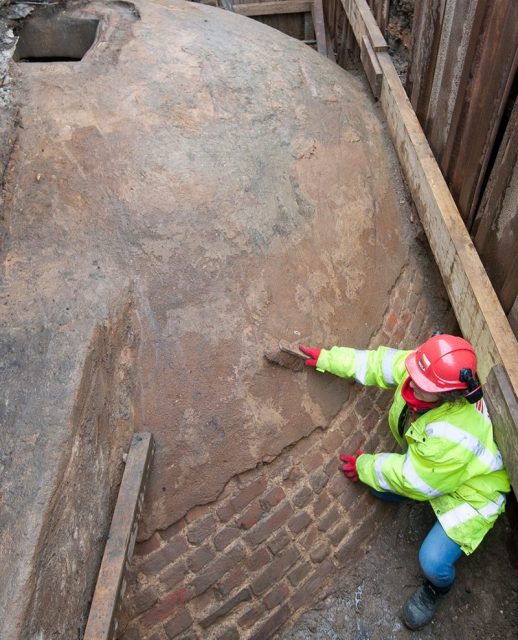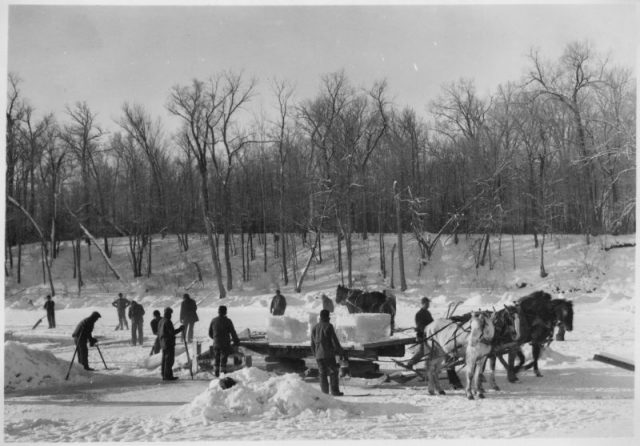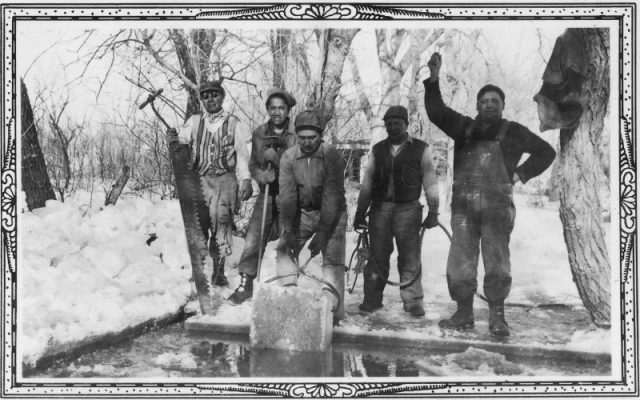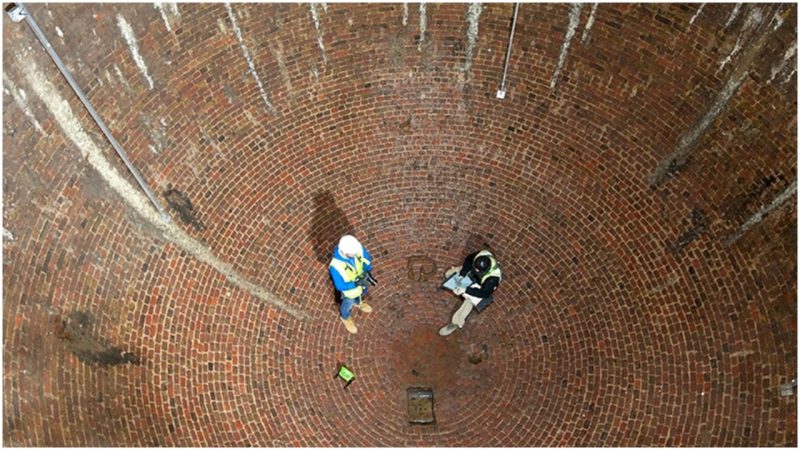A forgotten 18th century ice house, enormous in scale, was discovered during development work in 2018 at Regent’s Crescent in London, bringing back to life an era when the wealthy stored ice blocks underground all year round, allowing them to preserve food and serve iced delicacies no matter the season.
As the decades went by, this egg-shaped ice chamber also served hospitals and pubs, experts say. Clean ice was made use of by physicians to numb their patients for medical and dental procedures.
Measuring 24 feet wide and 35 feet deep, the red brick, egg-shaped chamber survived World War Two’s Blitz bombing, even though the mews houses were destroyed above ground, and remains in excellent condition, along with its entrance passage and vaulted ante-chamber.

“There was always an understanding that there was an ice house here somewhere, but we weren’t sure where,” David Sorapure, the head of built heritage at Museum of London Archaeology (MoLA) told The Guardian. He had been working on the site with developers Great Marlborough Estates. “Even after we discovered where the entrance was, we weren’t quite sure how big it was, or how you got in.”
The ice was either taken from local canals or lakes, or, in the 19th century, imported from Scandinavia by boat. Most ice houses were smaller, located near the houses of the wealthy.
The speculation is that Samuel Dash, with a family link to the brewing industry, was behind the original construction of this ice house in the 1780s.

The ice house was used by many more people in the 1820s, when William Leftwich, a pioneering ice merchant and confectioner, began importing high-quality ice from Norway. In 1822, he charted a vessel that brought 300 tonnes of frozen fjord, which he transported to the ice house.
“Following a very mild winter, he chartered a vessel to make the 2,000 km round trip from Great Yarmouth to Norway to collect 300 tonnes of ice harvested from crystal-clear frozen lakes,” according to Ian Visits. “The venture was not without risk: previous imports had been lost at sea, or melted whilst baffled customs officials dithered over how to tax such novel cargo.”

Luckily, a decision was made in time for the ice to be transported along the Regent’s Canal, and for Leftwich to turn a profit.
Once the ice was in place, workers would have climbed down into the void from a small corridor near the top, to chip off blocks when needed. Insulated with hay, these were then shipped by horse and cart to restaurants and private addresses and also, potentially, to some of the medical establishments nearby, according to Danny Harrison, a senior archaeologist at MoLA.
Sorapure said to the media, “Standing inside the cavernous and beautifully constructed Ice House at Regent’s Crescent, it is fascinating to think that it would once have been filled with tons of blocks of ice that had traveled across the North Sea and along the Regent’s Canal to get there.”

“The structure demonstrates the extraordinary the lengths gone to at this time to serve up luxury fashionable frozen treats and furnish food traders and retailers with ice.”
Once refrigeration became widespread in the 20th century, ice houses were abandoned.
The Ice House has been designated as a Scheduled Monument by Historic England, and it is hoped that public access, via a new viewing corridor, will be made available at certain times of year during archaeological and architectural festivals.
Great Marlborough Estates, which own the property, is in the process of restoring the historical features of the Crescent along with the Ice House. Built in 1819, the Grade I listed Georgian crescent was designed by John Nash, who was the famed architect of Buckingham Palace.
The houses were destroyed by the Nazis during the Blitz and subsequently replaced in the 1960s by a replica.
Read another story from us: Ready to Flee the Volcano – Rare Harnessed Horse Found in Pompeii Ruins
Honoring Nash’s original vision, the redevelopment of Regent’s Crescent aims to remain historically authentic, “from the shape of the windows to the lime-washed render wash used on the façade,” reported the Daily Mirror.
Nancy Bilyeau, a former staff editor at Entertainment Weekly, Rolling Stone, and InStyle, has written a trilogy of historical thrillers for Touchstone Books. Her new book, The Blue, is a spy story set in the 18th-century porcelain world. For more information, go to www.nancybilyeau.com
